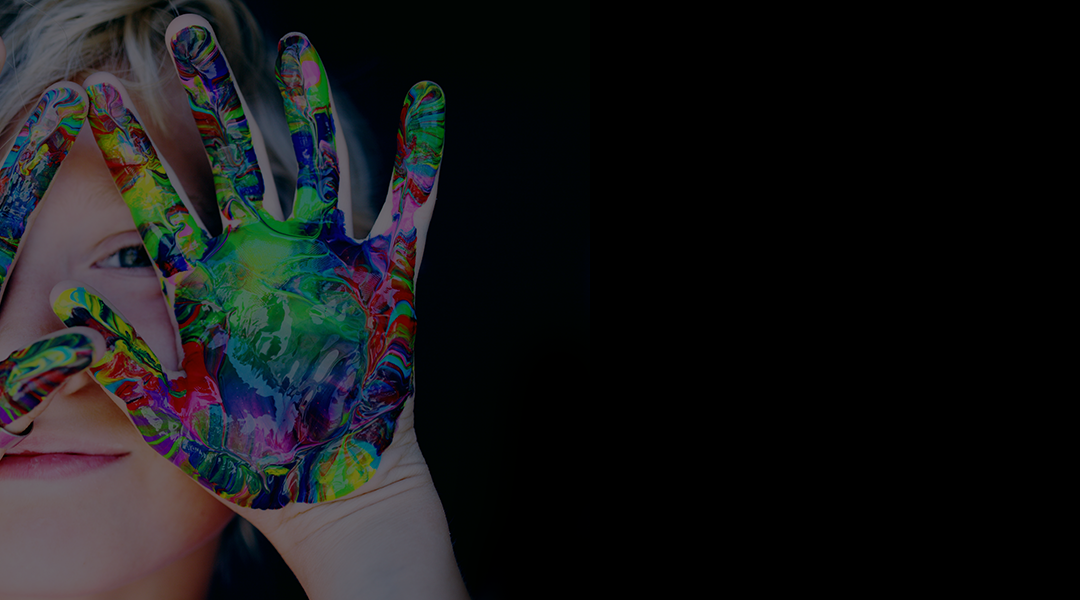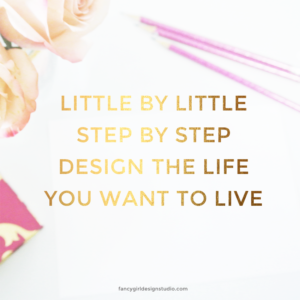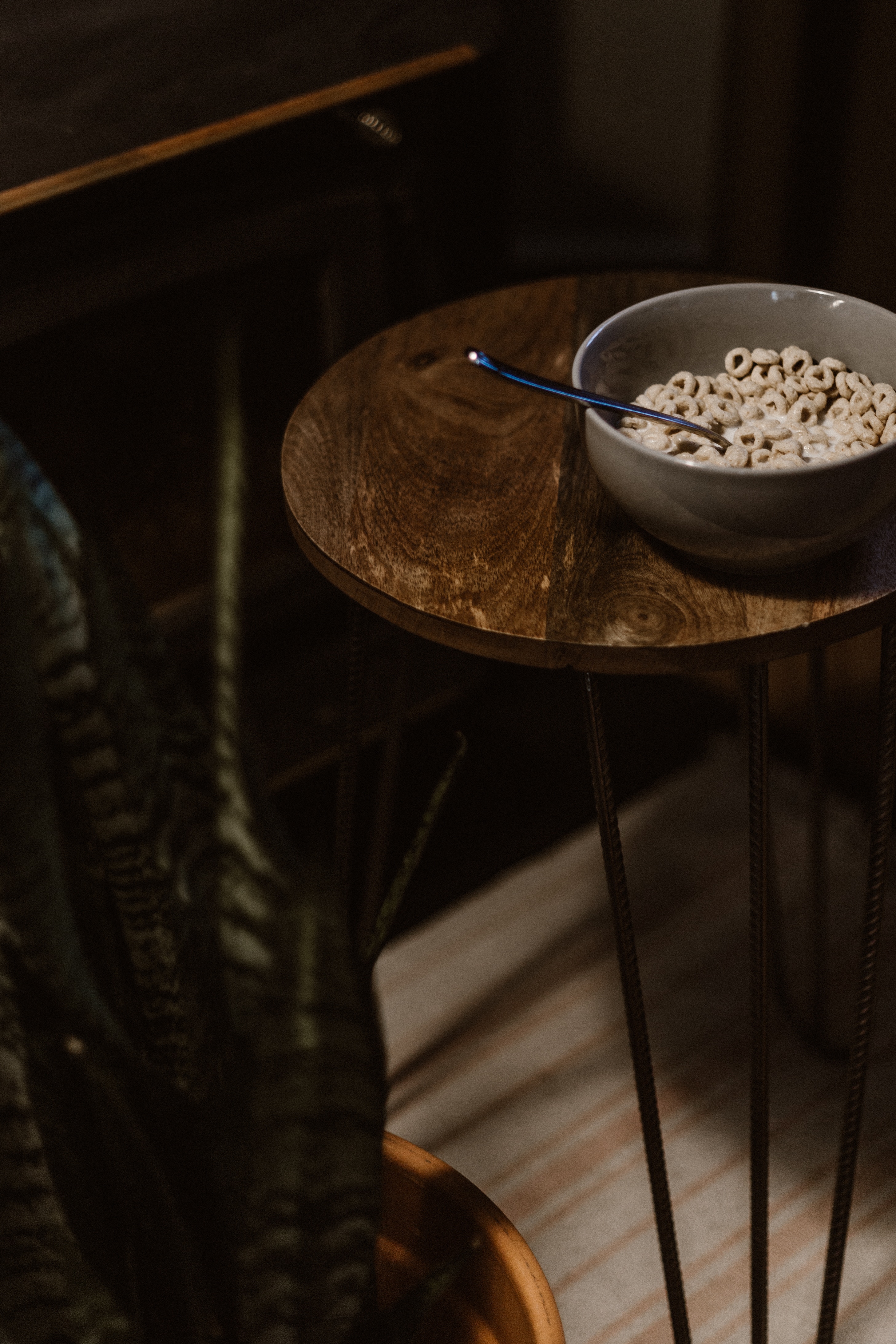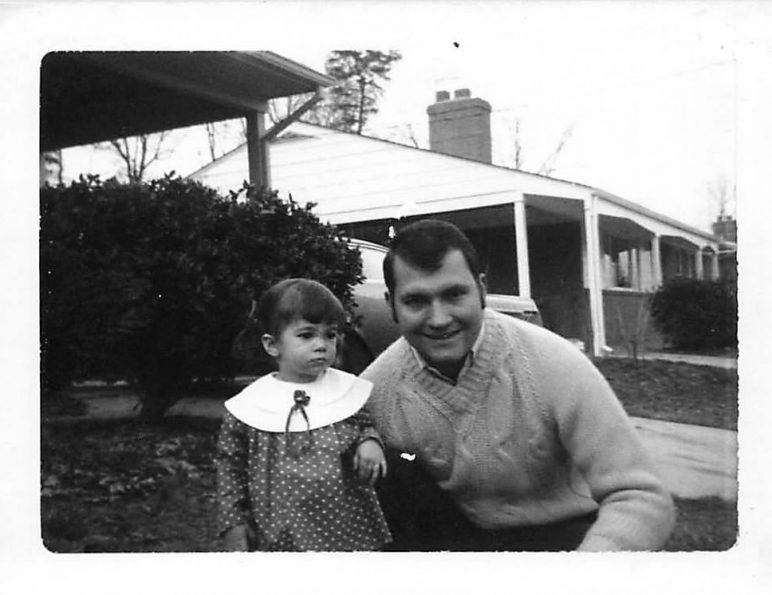
by Carol deLaski | Jun 8, 2018 | Happiness, Laura Hall, Relationships
Being Raised by “Mr. Fun”
“If you make something fun, it’s easier to learn.” ~ Larry Seaman
(Coach Laura’s Dad)
Have you ever done a values assessment? A values assessment is a process that helps you get clear on your core values. A value is defined as a principle, standard, or quality considered inherently worthwhile or desirable. In the book What Color is Your Parachute, Richard Bolles says, “Values are a matter of what guides you through every day, every task, every encounter with another human being.”
I’ve done several values assessments over the years and one of my values which shows up consistently, time and time again, is fun. I try to find a way to have as many moments of fun in my day as possible. I think the reason this value has been so consistent in my life is because I was raised by “Mr. Fun”. My dad, Larry, is one of the most fun-loving people you will ever meet. With Father’s Day coming up, I thought it would be appropriate to share a little with you about my dad and what it was like being raised in an environment of fun.
One of the things I’ve always admired about my dad was what an excellent father he was despite the fact that his own father died when he was just eight years old and his memories of his dad are very limited. He parented from a place of intuition more than from following the model his father gave him because he just didn’t remember enough about his dad from before he died.
My dad was 23 years old when I was born in May of 1967, and as I’ve been told, he loved me wholeheartedly from the moment he met me. I was definitely Daddy’s Little Girl! My mom says that it wasn’t unusual for him to come home from work with a new dress for me, which he’d promptly put me in and then take me out to show me off to all of his friends.
So many of my earliest memories from my preschool days are full of fun. My dad played on a bowling league and I can remember begging him to let me go with him. I would run around the back of the bowling alley with other kids just waiting for the chance to bowl a couple balls at the end of the night. We’d then go home and my dad would help put me to bed with a bedtime story… he very rarely read to me, but instead made up stories out of his head… and an evening ritual that I named “do face” where I would close my eyes and my dad would lightly trace his fingers around my eyes, nose, and face… I can still remember how relaxing this was for me!
As I approached elementary school age, our fun became more educational. I perfected my spelling with The Spelling Game… which was just my dad giving me a word, spelling bee style, and asking me to spell it. We would play this everywhere, but mostly in the car during long rides. Another one of our favorite car games was Name That Tune… my dad was a harmonica player, so he would play a song, and my brother and I would try to guess what he was playing. At home, we worked on my math skills by playing store. My dad would sit down with me and give me a pile of money. He then would bring me an item he wanted to buy and it was my job to make the correct change from the money he gave me to pay for his “purchase”.
Spending time with family, my grandmother, aunts, uncles and cousins, was also part of the environment of fun I was raised in. We would get together for crab feasts, card games, holidays, and birthdays. We’d go out in the evening for ice cream followed by a game of hide and seek, and as dusk set in, we’d grab a jar and collect fireflies. We went camping and would sing camp songs, make a fire, and stargaze.
In a nutshell, my childhood was full of love, learning and fun!
So, as we approach Father’s Day this year, I want to say, thank you Dad for raising me in such a way that I recognize the value of FUN!!! Now that I am an adult, I recognize that not everyone is able to give themselves permission to play and have fun the way that I can, and I believe it is because of you that fun always shows up as one of my core values. You are an amazing man and I am lucky to be your daughter!
What fun memories do you have of your dad? Please share them with me! I’d really love to hear some of your stories too!
Today’s author: Laura Hall, CPC, CDWF: As a certified professional coach since 2009, Laura Hall, Certified Daring Way™ Facilitator has been helping people just like you make changes in. As a mother of 2 girls, Laura has a special interest in coaching parents, so if you still have children living at home, ask Laura about her Wholehearted Parenting programs. Laura can be reached via email at laurahallcoach@me.com or feel free to visit her website HallCoaching.com

by Carol deLaski | Jun 1, 2018 | Change, Donna Kettell
Design the Life You Intend to Live!
Isn’t it interesting how one experience in your life can provide new perspective in a totally different area of your life? Several years ago, when my home was celebrating its 21st birthday, I decided it was time for a much needed kitchen renovation project. Over that next twelve months, I spent time thoughtfully planning, researching options, shopping for inspiration, creating a budget, interviewing design consultants, and imagining exciting possibilities. It was fun, and at times overwhelming and a little exhausting. There were a few setbacks and a few challenges that caused me to hit the reset button. There were so many decisions and I wanted to get it right. Finally the time arrived to say goodbye to the old kitchen, which surprisingly was a little bittersweet. After all, a lot of life had been lived in that kitchen with lots of memories. Several weeks later, that kitchen was brand new from the ceiling to the floor and everything in between. The transformation felt amazing and the changes brought me such joy!
 One day as I sat in my family room looking into my lovely new kitchen space, I realized that the coaching process is similar to this interior design process in so many ways. We are all our own interior design projects. Every day, we have the opportunity to create the blueprint for the life we intend to live. The word intend is very meaningful. We are creating the life we are living each day, whether we are doing so consciously or unconsciously without any thought. However, when we live with intention, we plan and create a clear purposeful vision for our lives.
One day as I sat in my family room looking into my lovely new kitchen space, I realized that the coaching process is similar to this interior design process in so many ways. We are all our own interior design projects. Every day, we have the opportunity to create the blueprint for the life we intend to live. The word intend is very meaningful. We are creating the life we are living each day, whether we are doing so consciously or unconsciously without any thought. However, when we live with intention, we plan and create a clear purposeful vision for our lives.
Designing the life we intend to live takes thoughtful contemplation, and it is a daily personal growth process. Just as I experienced with my kitchen design project, there is also a lot of work that goes into our personal growth. It can feel a bit uncomfortable at times, and it may feel uncertain. But, with the right tools to guide you, you can create a process to allow your life to transform, one design piece at a time. And just like a simple coat of fresh paint, or a few new throw pillows in your home, each small step can bring you closer to the life you want.
On the evening of Wednesday, June 27, 2018, I will be facilitating our Be Redesigned event. We’ll all explore the different areas of our lives and assess where we may want to redesign some pieces. At the end of the evening, you should feel empowered to take your new customized interior design skills and use them in your daily life to constantly create the life you intend to live! I hope you will join us. Bring your inner interior designer with you. This fun night is all about you creating the best version of yourself!
Today’s blog was written by WWR Partner Coach, Donna Kettell. Donna is a certified professional coach (CPC) and a master practitioner in energy leadership (ELI-MP). Her certifications were earned through The Institute for Professional Excellence in Coaching (iPEC), which is accredited by the International Coaching Federation (ICF).

by Carol deLaski | May 25, 2018 | Kat Middleton
If things aren’t perfect, they must be horrible right?
If you’re not a fascinating person, then you must be boring?
I’ll either succeed, or I’ll fail.
You will love me or hate me.
Are you a person who sees things in extremes?
Good or bad,
Perfect or useless,
Right or wrong,
Moral or immoral.
YIKES . . . what a tough way to live!
If you are someone who looks at things in absolutes or falls victim to polarized black and white thinking, then this blog is for you.
All or nothing thinking is a thought pattern that can generate a “flight, fight, or freeze” response to danger. And, although much is going on in our world today that is concerning, we often fall prey to distorted thinking, better known as “stinking thinking.”
Small children just learning how to speak and organize thoughts think in black and white terms. This is normal and is called primitive thinking.
As adults, we are prone to primitive thinking during moments of crisis and stress. When an adult starts to feel overwhelmed by emotions, they can regress back to the way they saw the world as a child.
Black and white thinking is seeing the world only in extremes, and it skews your perspective. This kind of thinking can make you feel stressed, confused, overwhelmed, or just plain fed up. It can exacerbate depression, marital conflict, anxiety, and a whole host of other problems. By thinking this way, we miss the reality that things rarely are one way or another but usually somewhere in-between; in other words, there are many Shades of Gray.
Just ask Crayola!
Can you see yourself in any of the next three scenarios?
Becky is a middle-aged married woman who is continuously feeling depressed. She says she NEVER feels happy anymore and that she is ALWAYS disappointed with those around her and herself.
Susan, who attends Weight Watchers regularly, just ate a delicious piece of chocolate crème pie and told herself, “I guess I just blew my diet today, I might as well eat another piece.” All or nothing thinking can turn a single bite into a full-blown binge.
Joseph, an aspiring actor who supports himself currently as a carpenter, despite good reviews in several plays, reports feeling overwhelming anxiety whenever he has to audition for a role. Joseph ALWAYS prepares thoroughly but becomes increasingly anxious for days before the audition. He says he NEVER does well at auditions and would NEVER overcome this anxiety. He believes he will NEVER make it in the business and ALWAYS will just be a carpenter.
Joseph eventually realized that his black and white thinking became a self-fulfilling prophecy. He learned how to view his situation how it was, a mix of good things and room for improvements. With a newfound appreciation for the many shades of gray, Joseph is now happier, more realistic, less anxious, and successful in his new career.
You too can learn to recognize faulty thinking and make a choice to challenge it in favor of healthier living.
Recognize there may be more than one way to interpret any given situation. By doing so, you can avoid jumping to wrong and possibly harmful conclusions. When looking at a situation, your perspective follows your current line of thought, which is NOT necessarily the reality of a situation.
Stop using language that exaggerates. Words like:
Always
Never
All
Nothing
Replace negative words with positives ones
| Can’t |
Can |
| Problem |
Challenge or Possibility |
| Always |
Often |
| Never |
Seldom |
| Bad |
Unwise |
| Faults |
Differences |
| Mistakes |
Valuable Lessons |
There is precious little in this world that is genuinely black and white. Give yourself and those you love a break and discover the many beautiful shades of gray. When you learn to recognize the spectrum of gray in the difficult experiences you encounter in life, you will be better equipped to explore ways to improve your situation and come out on top.
And lastly, as an Empowerment Coach,
“Don’t believe everything you think.”
Today’s author: Kat Middleton is a professional certified coach and the founder and CEO of Wholehearted Concepts, LLC. Kat is a Professional Energy Empowerment and Self-Acceptance Coach who specializes in helping clients personally and professionally that struggle with inner doubt, perfectionism and being way too hard on themselves. She is available for private one-on-one coaching as well as group workshops, seminars, and speaking events. Learn more about her at her website: www.wholeheartedconcepts.com

by Carol deLaski | May 18, 2018 | Casey Clark, Health
Have you ever eaten the last piece of dried-out cake sitting on your kitchen counter, or maybe the bowl of jelly beans because they were on your desk? Maybe sweets are your weakness, but have you ever eaten all the French fries on your plate just because they were there? We all have, but why? We do this for two reasons: cues around us and the mindless margin.
Cues
Let’s say you sit down for dinner and there are mashed potatoes, green beans, and pork chops on the table. You make your first plate and you feel content, but you see that there are still mashed potatoes left, so you grab seconds and take what’s left. Your family finishes off the pork chops and green beans and get up from the table. You’re not exactly feeling full but since everyone has finished the food on the table and have excused themselves, you don’t go grab something out of the cabinet, you simply stop eating. Your family getting up and the food being gone are the visual cues that make you not want to eat more.
Let’s even take a bowl of cereal, for example. If anyone fixes a bowl of cereal, typically no one is leaving a few milk-soaked Cheerios in the bowl. We eat them all because they’re there and it’s a visual cue for us to keep eating. Most of us don’t think anything of this. There’s no magic number of Cheerios that makes us so full we feel like we’re going to pop and there’s no magic number that makes us feel that we have under-eaten. Since there is no magic number, we fill up our bowl of whatever size we choose and go for it until we’re done. What we fail to realize is that when we’re in that zone where we’re eating a few more Cheerios or a few more jelly beans, we don’t feel the difference between 700 and 900 calories. This zone is called the mindless margin.
The Mindless Margin
Let’s face it, we don’t wake up one day 20 pounds heavier than we were when we went to bed. When we’re in the mindless margin zone, we can either under-eat or overeat without being aware of it. Doing this can creep up on us over time. Did you know that 3,500 calories equal a pound? It doesn’t matter if you eat those calories all together or 500 extra calories a day until you reach 3,500. You will gain a pound either way. This is problematic because if we eat 1,000 calories in one day, we feel that we haven’t eaten enough. We may feel weak, tired, and irritable. On the flip side, if we eat 4,000 calories in one day, we will feel that, too. We may feel slower, heavier, and won’t feel like doing much. However, if we only under-eat or overeat by 300 calories, we try to put on our favorite pair of jeans and we wonder why we can’t fit in them this season. The calorie range where we are unaware of what we’re doing is called the mindless margin. Here’s something to think about… just ten extra calories a day is enough to make you gain ten pounds in one year. Luckily, the same thing happens if we eat ten calories less per day.
Overcoming the Mindless Margin
As Americans, we typically stop eating when we’re full. Most other cultures stop eating when they are no longer hungry. So, the next time you sit down to eat – and by the way, you should always be sitting down to eat – try eating until you are no longer hungry. There is a significant gap in the number of calories you’ll eat. Start with cutting back by 20% of what you may think you’d eat. There are many studies that show that 20% goes unnoticed but 30% makes people feel deprived. Another great thing to consider is to add some fiber-filled carbohydrates or vegetables to substitute the 20%. Fiber always makes you feel fuller and more satisfied. Go on and give it a try – you may be surprised how easy it is to maintain or even lose weight by being aware of the mindless margin!
Today’s author: Casey Clark is an affiliate coach with Wholistic Woman and manages a health and wellness practice, Heaven On Earth, which focuses on self-care. Having been a student and working, both full-time, Casey has a deep understanding for the importance of self-care and is committed to helping those who lead busy lives, especially young professionals, accomplish prioritizing self-care so that they can live a holistically balanced, well and fulfilled life. She uses her own experiences as a motivator to help her clients achieve lasting, self-compassionate change that is aligned with their values. Find out more about Casey at her website: www.aheavenlyyou.com




 One day as I sat in my family room looking into my lovely new kitchen space, I realized that the coaching process is similar to this interior design process in so many ways. We are all our own interior design projects. Every day, we have the opportunity to create the blueprint for the life we intend to live. The word intend is very meaningful. We are creating the life we are living each day, whether we are doing so consciously or unconsciously without any thought. However, when we live with intention, we plan and create a clear purposeful vision for our lives.
One day as I sat in my family room looking into my lovely new kitchen space, I realized that the coaching process is similar to this interior design process in so many ways. We are all our own interior design projects. Every day, we have the opportunity to create the blueprint for the life we intend to live. The word intend is very meaningful. We are creating the life we are living each day, whether we are doing so consciously or unconsciously without any thought. However, when we live with intention, we plan and create a clear purposeful vision for our lives.

